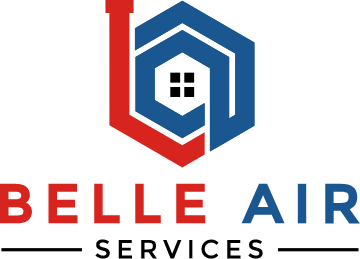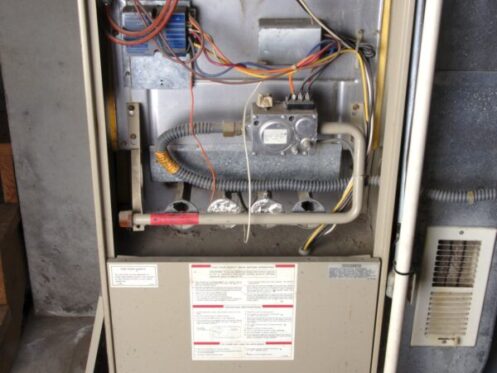Updated: October 2023
A furnace that continually shuts down before it has had time to fully heat your home can be a major issue. This problem is known as short cycling, and the reason it is such a big issue is that constantly turning on and off puts a huge amount of extra strain on the furnace and the HVAC blower. If your furnace constantly short cycles, it is likely to break down more often and need more repairs, and its lifespan will typically also be much shorter. Short cycling is also an issue in terms of your comfort as it will often result in your home always feeling too cold. There are typically only a few different issues that can cause furnace short cycling, and today we’ll be looking at what these issues are and how to solve them.
1. Thermostat Isn’t Accurately Measuring Your Home’s Temperature
The thermostat is the primary control for an HVAC system as it is what signals the furnace and blower when to run and when to shut off. As such, it could be an issue with your thermostat that is causing your furnace to shut down too soon.
Thermostats should always be in a central part of the building in a room that has adequate airflow and where you spend lots of time. In many older homes, you will often find the thermostat located in a hallway, and this is generally a poor location for a few different reasons. The first is simply that it’s not an area where you ever spend much time. Still, the bigger reasons are that hallways typically have poor air circulation and often stay warmer than the outer parts of the home even if they don’t have any heating vents. These issues mean that a thermostat in a hallway will often register a higher temperature than what the rest of the home is and thus signal the furnace to shut off before the entire building is heated.
An even bigger issue is if your thermostat is mounted anywhere that it receives direct sunlight at any time during the day. Sunlight can trick your thermostat into thinking the home is much warmer than it really is. Depending on how strong the light is, it could potentially make your thermostat register as much as 10 degrees higher than the actual temperature in your home. As such, your furnace may only ever run for a short time or go for long periods without running at all.
Your thermostat should also be in an area where the temperature is fairly consistent with the rest of your home and not in a room that usually stays warmer. This is why you should also avoid having a thermostat in the kitchen or anywhere near a supply vent or any other source of heating.
2. Malfunctioning Flame Sensor
As the name suggests, a furnace’s flame sensor detects that the furnace is lit by sensing the heat from the burners. Flame sensors are a vital safety feature as they prevent gas from continuing to flow to the burners if they aren’t lit or go out for any reason. If the flame sensor doesn’t detect the heat from the burners, it will trigger the unit’s gas valve to close to prevent the risk of explosion that could occur if gas continued to flow and build up inside the furnace.
If your furnace constantly goes out less than a minute after it first lights, you can be fairly certain that there is an issue with its flame sensor. The most common reason that a flame sensor will stop working properly is due to it being covered in a thick layer of dust and soot as this will insulate the sensor so that it can’t detect heat. This is one of the many reasons why your furnace should be professionally maintained every year as the technician will clean and test the flame sensor to ensure it works as it should.
The flame sensor can also simply stop working due to age, in which case you will need to have it replaced. Luckily, replacing a broken flame sensor is fairly inexpensive compared to many other furnace repairs.
3. Overheating
The most common reason a furnace will start short cycling is due to overheating. This usually happens because the air filter is clogged with debris as this will drastically reduce the amount of cool air drawn into the furnace. If not enough cold air is drawn in and forced over the furnace’s heat exchanger, the heat will quickly start to build up inside the unit to where it begins overheating. Closing too many of your vents can also lead to overheating as all of the hot air will have nowhere to go.
All modern furnaces have something known as a high-temperature limit switch that will automatically shut the furnace and the blower off if it detects that the system has started to overheat. This is important as overheating can damage the unit’s wiring or lead to a fire risk. Overheating may also cause the heat exchanger to crack, which is a much more serious problem since it could result in carbon monoxide leaking out.
If the limit switch does ever activate, you will then need to wait some time until it detects that the temperature is low enough for the furnace to safely operate again. In some cases, you may also need to reset your furnace before it can turn on again.
The best way to prevent your furnace from overheating is to make sure you leave all of your vents open and check your air filter every 30 days and replace it whenever it starts to look black or overly dirty. In general, you should never go for more than three months without replacing your air filter.
4. Damaged Electrical Wiring
There may also be times when your furnace shuts down because it keeps tripping the circuit breaker. If your furnace does ever trip the breaker, you can try to reset the breaker and see if it runs normally again. If the breaker trips a second time, we would recommend leaving the unit off until you can have it inspected. In most cases, this problem indicates that the unit’s wiring is damaged and leading to a fault or short circuit that overloads and trips the breaker. Damaged wiring is a serious issue as it could potentially start a fire, which is why this is a problem you should get taken care of immediately.
5. Furnace Is Oversized
There is also a chance that your furnace is simply too large for your home. An oversized furnace will produce more heat than your HVAC system can handle, which often results in the furnace continually overheating. An oversized furnace will also use much more energy and lead to your heating bill being much higher than it needs to be. If your furnace is oversized, the only real option is to replace it with a new unit that has been calculated to be the appropriate size for your home.
If your furnace is short cycling or you need any other heating or cooling repairs or maintenance services, you can count on the team at Belle Air Services. We work on all makes and models of HVAC equipment, and we can also help with heating and cooling installation. For more information on our HVAC services in Playa Vista, give us a call today.
Superior Heating Services in LA County
When you need reliable heating services in Playa Vista and LA County – contact Belle Air Service for an appointment. We are fast, reliable, and happy to assist you in resolving your heating needs. We offer year-round HVAC service.





